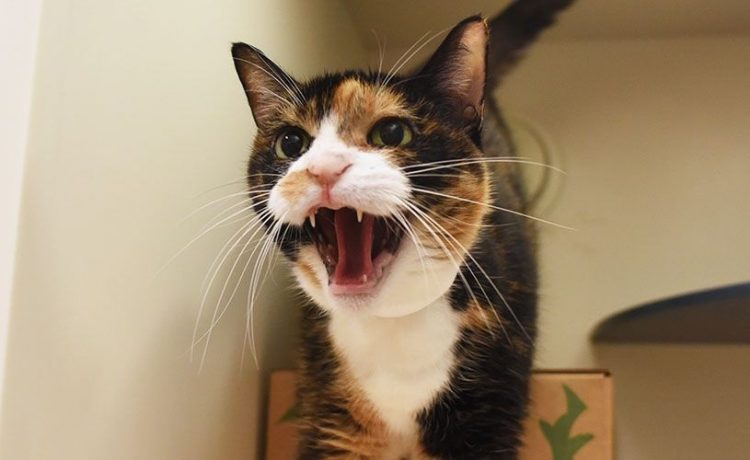Despite countless sharing our homes and lives with cats, lots of pet owners understand very little about distributing indications of anger, aggression or fear in these types of creatures. The average”Halloween cat” posture (arched back, increased fur, ears , back ) clearly signifies aggression or anxiety, but cats additionally utilize other bearings and behaviours which are more subtle and easily overlooked.
Considering that a hostile experience with a kitty in any time is practically inescapable, a few hints can help you avoid harm should you end up in this kind of circumstance. For in-depth knowledge browse the detailing information at affordable pet care to take care of your pets well.
Which are the Symptoms of Aggression in Cats?
Luckily, most cats display some kind of outward indication when they’re angry or unhappy about something. Regrettably, a number of those signs Can Be Quite subtle and hard to translate, such as:
- Preventing eye contact, or glancing straight in the
- Dilated students
- Head hauled down
- Sharply swishing the tail back and on
- Raised fur across the neck, tail and back
- Puffing the tail up
- Ears flattened against held or head back
- Hissing, growling
Sometimes, the indications of trouble might happen quite suddenly and with no obvious warning. As an instance, petting-evoked aggression takes place when you’re petting a kitty (generally while the kitty is in your lap) and also the kitty appears to be appreciating the conversation, but suddenly strikes at bites you. The most plausible explanation for this behaviour is that a few cats have a limited tolerance to be petted, therefore the ideal method to prevent this dilemma is to quit petting until that limit is reached. Sad to say, the signals beyond the attack or sting might be rather subtle–flicking the ear or tail could possibly be the sole indication of an issue. Recognizing what those behaviours mean may help save you from becoming hurt.
Things To Perform
- When in doubt, make space. When the cat is attempting to escape from you, then allow itas long as you possibly can achieve this safely. If you’re pursuing or controlling the cat at all, cease. When a cat is aggressive or fearful, its natural reaction is normally to escape from you. Provided that it can accomplish that, the problem might not advance any farther. Always make a kitty a means to escape a circumstance. Typically, when the cat could eliminate, it is not as inclined to strike or become more competitive.
- Keep your movements slow and also your own voice tender. The kitty is quicker than you. Unusual moves or loud sounds (like yelling ) is going to startle a kitty that’s already frightened or frighten a cat that’s already irritated.
- Consult with your vet. Painful states, hormonal effects or other health problems might cause the cat to be competitive. Relieving these issues might help remove the behaviour.
- Attempt to find out what the cat enjoys or does not like. Some cats prefer to be picked up and maintained, while others certainly refuse to take this. This may appear contradictory if the exact same cat that does not wish to get picked up needs to be on your lap if you’re sitting down. Frequently, interacting with cats entails negotiation–when picking the cat up isn’t likely to function, do not take action.
- Teach kids. Without a doubt, kids can be tough with cats or exhibit other behaviours that might make a cat to become fearful or aggressive . Some kids will need to be demonstrated how to play quietly with a kitty. Very young children might also pursue or control a cat that’s hoping to escape from them pick up a cat which resents being picked up. These actions ought to be defeated.
- Publish new pets gradually and under controlled scenarios. If your furry friend is meeting a different creature (if a dog or another cat), attempt to have one or more of these onto a leash. When a fight breaks out, the combatants could be pulled apart without needing to reach in the struggle to distinguish them. In addition, don’t be shocked when it takes your pet a very long time to take a pet. Provided that the 2 pets can become away from one another and do not need to compete for affection or food, conflicts can typically be prevented.
What Doesn’t Perform
- Never pursue a kitty that’s attempting to escape from you. It’s already fearful; do not make it seem endangered.
- Do not approach cats. For those who have to interact together, make them approach you. If the cat is hurt or in pain, then it might be more inclined to be competitive, so in the event that you need to pick the cat as much as help it, then use a towel or alternative way to guard yourself.
- Do not underestimate the cat’s ability to harm you. Yes, most cats are somewhat modest, but do not feel their size means that they aren’t dangerous. A kitty can severely hurt you. Cats are all blessed with unbelievable speed and versatility. Unless they’re declawed, all of four toes are all weapons, since is a mouth filled with sharp teeth. Cat scratches and bites can transmit germs that result in cat scratch fever, an illness having flu-like symptoms. Cat bites may also lead to disease and acute tissue swelling. Always use care when dealing with a cat that you do not understand, even when cat is a member of a relative or friend.













